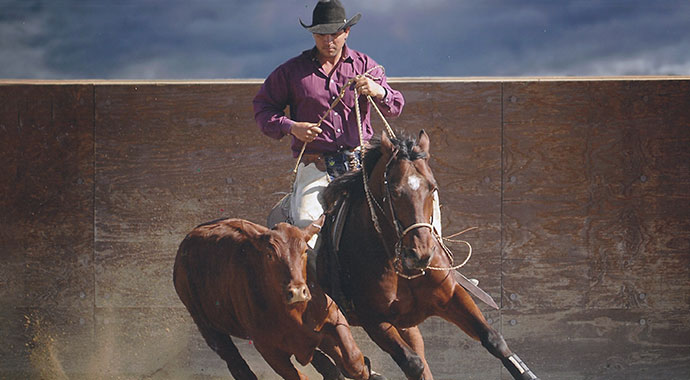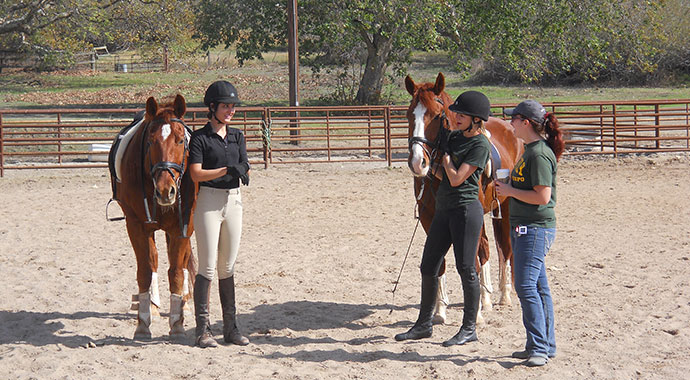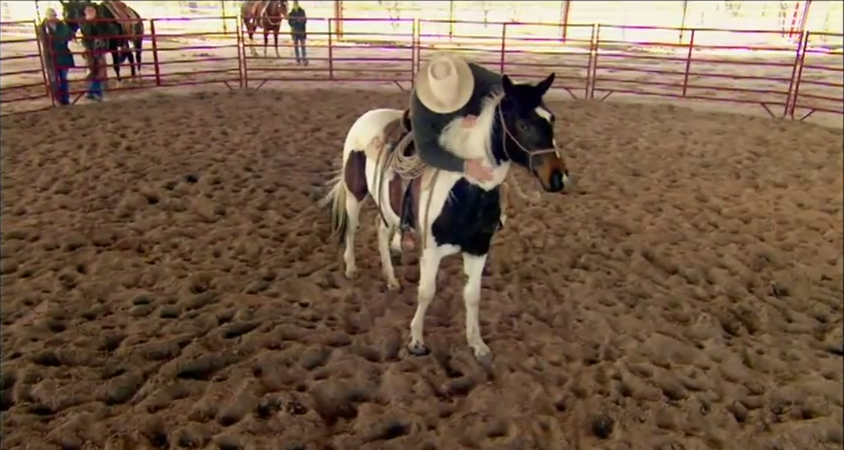If you’ve been anywhere near the Reined Cowhorse circuit in SLO county, you’ve probably heard of Tye MacDonald. The Montana-born horsemen has a great hand with horses and knows his way around a cow. I asked Tye some questions so we can all get to know him a little bit better and take some of his knowledge to be better with our own horses.
In your own words, tell us a little about yourself – what part of SLO do you live in, what do you do for a living, etc.
Sure, we are located northeast of Paso Robles along the Estrella riverbed and primarily train Reined Cowhorses. I also ride a lot of colts and some reiners and cutters too. We do lessons, clinics and started a small club that puts on schooling shows, the Dry River Reining Club. My wife and I have three kids that we are trying to domesticate to no avail. It is a zoo here most of the time.
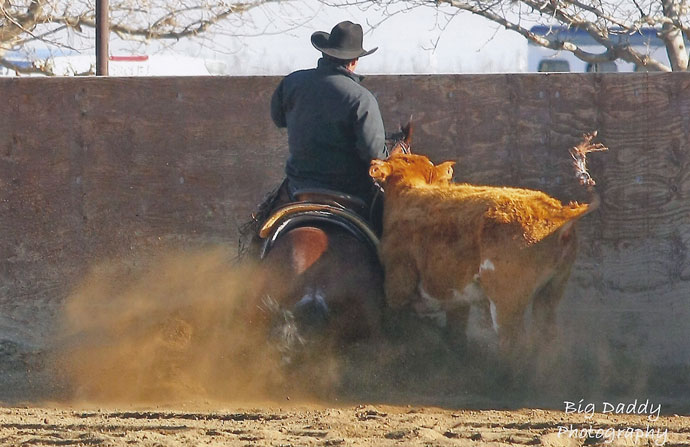
For those of us who don’t know, can you give us a brief overview of what reined cowhorse work is?
Reined cowhorse is an event made up of three portions. The horse should be able to work out of a herd of cattle and keep an individual cow separated from the herd. This portion is basically the same as cutting except that the rider is allowed to rein the horse versus a cutter must drop his hand while working. The second event is a reining pattern. There are some minor differences in style and patterns between a cowhorse and a straight reiner but very similar. The final event is what we call cow work or fence work. This is what separates the cowhorses from the others. You must control a cow at the end of the arena, driving it across the end, stopping and turning it until you have shown the horses ability to control the cow, then drive it down the long side of the arena at speed, turn it at speed at least once each way and then drive it in a circle each way in the center of the arena. It’s very fast, very precise, and very easy to mess up. All of this is based on the style of horsemanship that was developed here and is unique to California. Forget Hollywood, this is California’s greatest contribution to the world!
Forget Hollywood, [reined cowhorse] is California’s greatest contribution to the world!
I’ve heard that you’re from Montana – what got you to move out west to Paso Robles?
Yes, I’m from Montana. The majority of my family is still there and I love the mountains, but it was a difficult place to train horses for a living. At the time, I was leasing an arena from a couple who also had several great horses in training. They had decided to move to a warmer climate and had settled on Paso Robles. They asked if my wife and I would like to move with them. I hated to give up those horses I had worked so hard on, and it was about 20 degrees below zero when they asked me, so here I am.
What’s your biggest fear when it comes to horses and riding?
My biggest fears related to horses and riding are not really what you’d think. Mostly I worry about keeping people safe. Green horses with green riders are especially nerve wracking. They often don’t realize how much training, time and practice they and their horse need for both to be safe.
What’s the biggest reward you’ve received from riding and/or having horses in your life?
There have been many things about riding and training that have been rewarding but the biggest are the traits that you have to develop in yourself in order to effectively work with horses. It’s rarely enjoyable developing traits like patience or humility but in the end it’s probably the most valuable part of working with horses.
It’s rarely enjoyable developing traits like patience or humility but in the end it’s probably the most valuable part of working with horses.
Tell us about the horse that you’ve owned/ridden that has had the biggest impact on you?
I think every horse I have ridden in my life has had an impact and it’s hard to narrow it all down to one horse. The really bad ones and the really good ones are the ones that open your eyes. I rode a horse named Graylano that was not only an incredibly intelligent and athletic horse but also an individual that I liked and who seemed to like me. He could do things while fencing a cow that would amaze me.
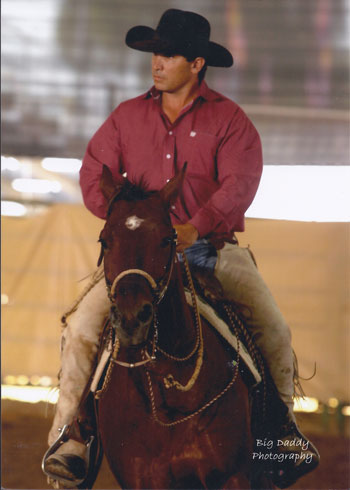
I read about your Top 5 Training Rules on your website – can you tell us about those and why they’re your top 5?
The top five training rules are:
- Always warm your horse up. Many problems with horses can be avoided by just taking a few minutes to get his mind and body ready to ride.
- Ride where you are. We often ride with our minds elsewhere. We get caught up in how the horse acted in the past, or how he acts in a different place. That just means be as present as possible.
- You can’t force a horse to be gentle. It’s important to remember that time, exposure, and consistency are needed along with effective and appropriate boundaries for a horse to feel safe and become gentle.
- Balance action with inaction. I think anything we do with a horse works best in balance. Not just physical balance but also mental and emotional balance. This means that for every minute of demanding work, there needs to be an equal amount of laid back quiet riding in order for the horse to really become his best.
- Know when to quit. Usually whatever earns a horse R and R is what he will head. You have to recognize when a horse tries to do what you are asking for and reward it. Sometimes you have to simply remove pressure, sometimes you need to stop completely and put him away for the day.
Why are these things my top five? Well…when my wife first put together our website, she used these as examples for me to work off of. When I sat down to edit them it turned out that I liked them just as they were. I guess you could say it was her idea of what she thought I might say and she was right, except that I probably wouldn’t have said it so well or gotten the punctuation quite right!
Most all of our readers have horse experience, but many have never worked cattle. Any tips for working cattle for the first time?
The main tip I have for working cattle is this: don’t just go thunder around chasing cattle. There are parameters an effective cowhorse must work within and those should never be gray areas. There are many but the one that comes to mind is that the horse must work in a series of straight lines, stopping completely every single time the cow stops or turns away. It’s a good idea to spend some time with an experienced person to get an idea of what you want to reinforce before you go in and give your horse the wrong idea of what it should be doing (although that likely would be fun).
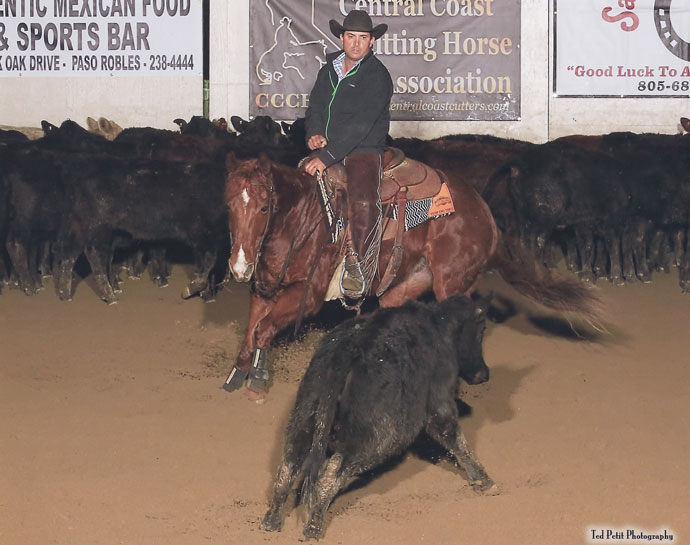
What advice would you give to anyone looking to become a professional trainer?
If you truly think you want to be a horse trainer, apprentice first. Find someone you respect that you can communicate well with to teach you all they can. You won’t make any money and you will be a slave but it will save you years of frustration and difficulty. You should learn more than just training techniques. While apprenticing, you can learn the economics of the business, the logistics of travel and showing, how to handle relationships with clients and family, etc.
I always like to do a fun question at the end of these and I was asking around to find out what would be good. I heard that you’re known for being pretty easy on the eyes for a cowboy. Have any style tips for us guys?
I guess if you are going to have lies and misinformation spread about you that’s the best kind. But sure, I have some style pointers:
- 1st- Always wear pants in public. Not only does it seem to set people at ease, but then you never really need a napkin.
- 2nd – Accept the judgment of the women in your life regarding shirts. Who cares what you think personally? As long as she’s happy, it’s all good.
- 3rd – You should make sure that any manure stuck to your boots gets scraped off prior to events involving others in suits with food.
- Finally and most importantly, always wear a felt hat. They provide relief from the sun and rain, impact protection, and you will never have to comb your hair again. Welding helmets work well too, but they limit your vision at night.
Thanks so much Tye for sharing some great (and humorous) thoughts with us! If you’d like to find out more about Tye, his family, and his work, check out his website at MacDonaldPerformanceTraining.com or on Facebook at facebook.com/macdonaldperformancetraining.

